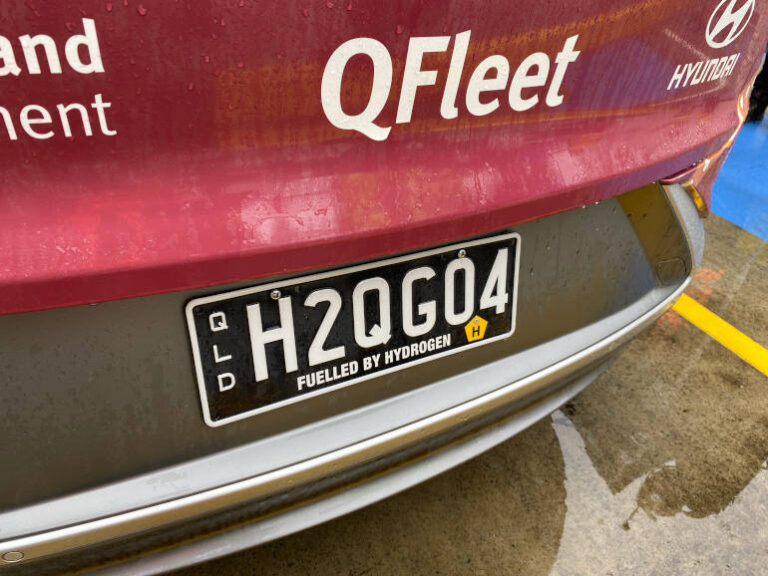Australia’s approach to decarbonising its transport sector is evolving, with hydrogen emerging as a key component in reducing emissions from trucks, cars, and other forms of transport. The Climateworks Centre report, “Decarbonising Australia’s Transport Sector,” outlines several initiatives that could transform hydrogen into a viable alternative energy source for both freight and passenger transport, supporting the country’s broader push toward sustainability.
The Role of Hydrogen in Decarbonising Transport
Australia’s transition to a decarbonised transport system involves exploring zero-emission vehicles (ZEVs), with hydrogen fuel-cell vehicles (HFCVs) playing an integral part. Hydrogen-powered vehicles, particularly trucks, offer an effective solution for long-haul freight, which requires extended range and quick refuelling times compared to electric batteries. This makes hydrogen particularly attractive for articulated trucks, a sector where battery electric vehicles (BEVs) may struggle due to payload and range limitations.
The report identifies articulated trucks as the last sector of road freight to fully transition to zero emissions due to technological challenges. However, research and development are advancing rapidly in both battery electric trucks and hydrogen fuel-cell trucks. The potential of hydrogen to meet the range and power requirements necessary for long-haul freight is significant, positioning hydrogen as a dominant technology for articulated trucks in the future.
Hydrogen and Rigid Trucks
The decarbonisation of rigid trucks, which are often used for urban freight, faces regulatory challenges in Australia. Current regulations limit the use of electric and hydrogen-powered rigid trucks due to their weight. The report recommends amending axle mass limits to accommodate these heavier vehicles and to unlock the potential of hydrogen in this sector. Once regulatory barriers are addressed, hydrogen could see widespread adoption, especially with government support and industry coordination.
Hydrogen Production and Electricity Demand
Hydrogen production, however, is energy-intensive and closely tied to Australia’s renewable energy transition. The Climateworks Centre’s modelling shows that producing green hydrogen will require substantial electricity demand, especially by 2050, as the transport sector electrifies. In a scenario where the transport sector’s electricity demand reaches 221 TWh by 2050, hydrogen production will account for a significant portion of this figure. To balance this demand, the report advocates for a diverse set of solutions that reduce the sector’s reliance on any single technology.
Hydrogen’s Role in Passenger Vehicles
While battery electric vehicles dominate the passenger vehicle sector, hydrogen is still considered an important alternative for certain use cases. Hydrogen fuel-cell cars offer faster refuelling times and longer ranges, making them appealing for consumers who require more flexibility in their driving patterns. However, the deployment of hydrogen in passenger vehicles is more likely to be seen in niche markets or in regions with well-established hydrogen refuelling infrastructure.
Scaling Hydrogen Infrastructure
The successful deployment of hydrogen-powered trucks and cars will depend heavily on the development of hydrogen refuelling infrastructure. This will require significant investment from both the public and private sectors. Australia is currently in the early stages of developing this infrastructure, with various pilot projects underway. For instance, trials in South Australia and Victoria are exploring the use of hydrogen in heavier vehicles, laying the groundwork for broader adoption.
Policy Support and Coordination
The report emphasises the need for strong policy support to encourage hydrogen’s role in transport. Australia must adopt comprehensive policies that incentivise the adoption of hydrogen fuel-cell vehicles across different transport segments. For trucks, this might include adjusting the National Vehicle Emission Standard (NVES) to set ambitious targets for zero-emission freight vehicles, alongside financial incentives such as subsidies and tax breaks to reduce the total cost of ownership.
The shift toward hydrogen will also require industry collaboration. The vast majority of road transport businesses in Australia are small operators, and they are less likely to lead the transition to hydrogen without coordinated efforts from government and larger industry players. Programs similar to the US’s $1 billion commitment to replace heavy-duty diesel vehicles with zero-emissions alternatives could serve as a model for Australia, ensuring that small and medium-sized enterprises are not left behind.
Hydrogen and Rail Transport
Beyond road transport, hydrogen has a role to play in decarbonising rail. The Climateworks Centre’s modelling includes the transition of rail to hydrogen or ammonia-powered locomotives. This shift would reduce reliance on diesel-powered trains and support Australia’s transition to a low-carbon transport system. For regional areas, where electrification of rail lines may be cost-prohibitive, hydrogen offers a practical alternative.
Conclusion
Hydrogen is positioned to be a crucial part of Australia’s transport decarbonisation strategy, particularly for trucks and heavy freight. However, its success will depend on overcoming regulatory, technological, and infrastructure challenges. With strong policy support, investments in green hydrogen production, and coordinated efforts across government and industry, hydrogen could play a pivotal role in achieving Australia’s zero-emissions transport goals by 2050. The Climateworks Centre’s recommendations highlight that a diverse mix of technologies, including hydrogen, is key to creating a resilient and sustainable transport sector.






